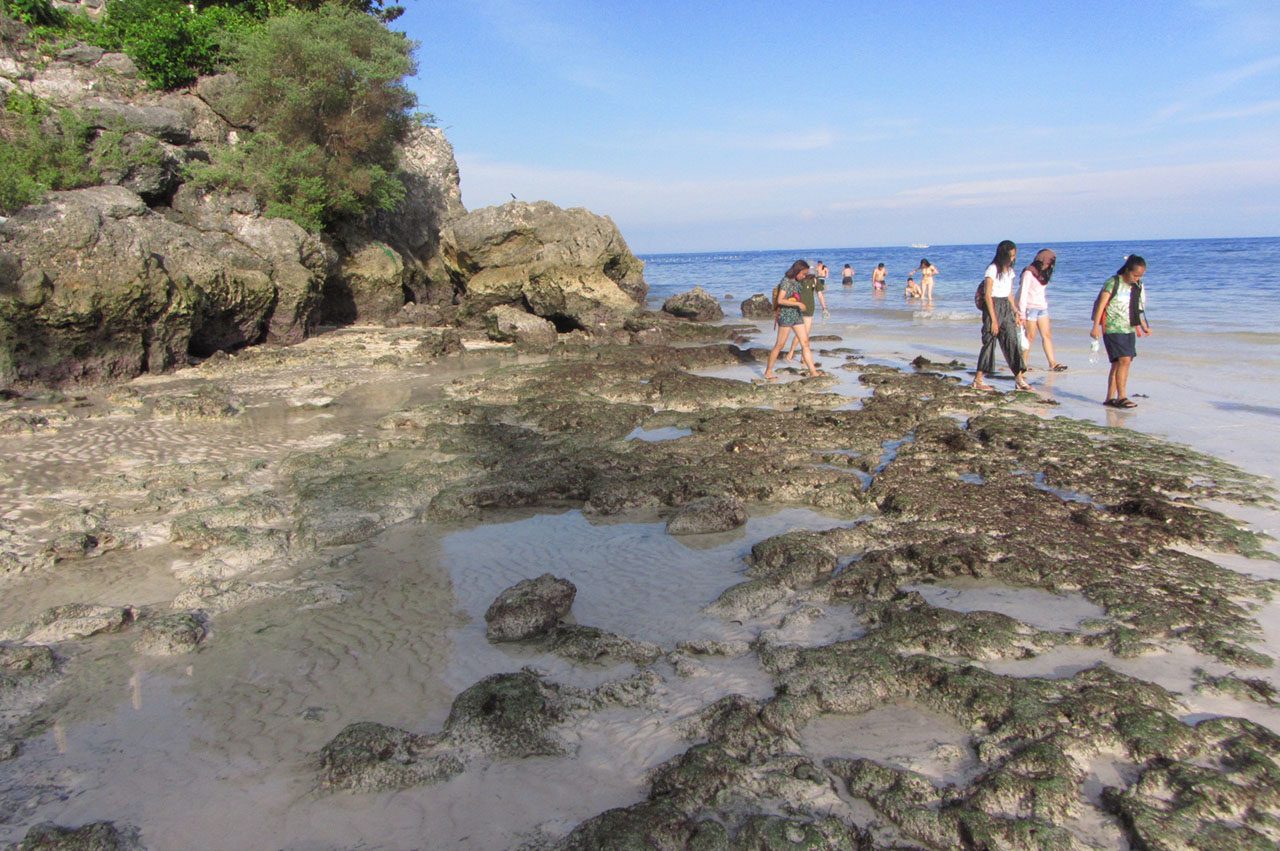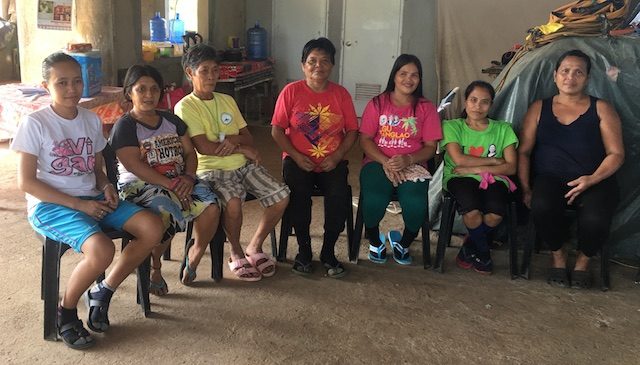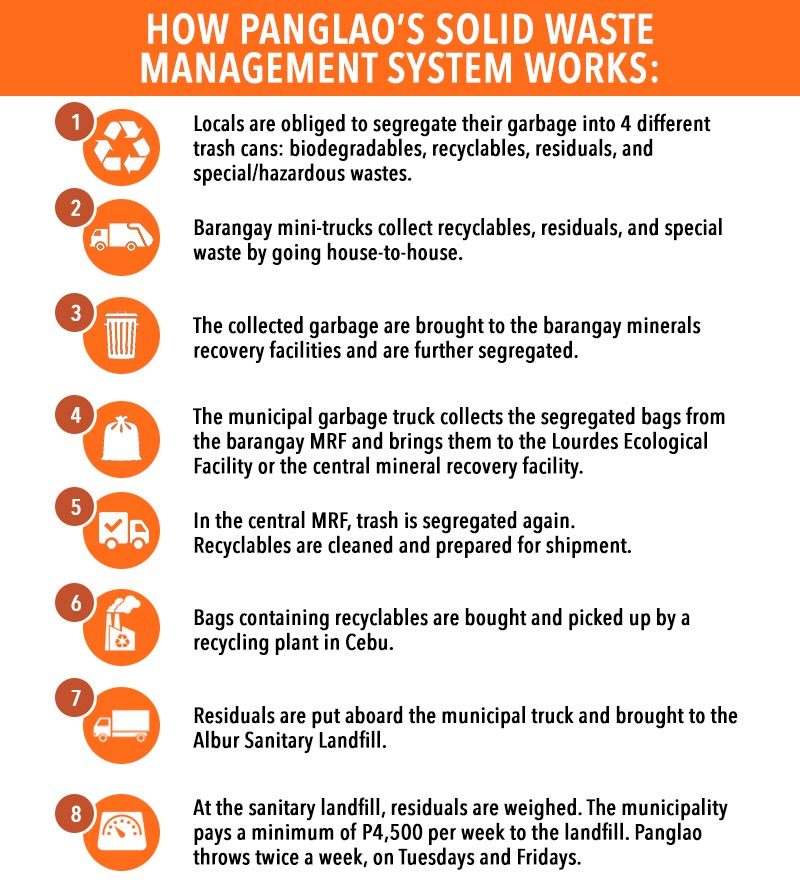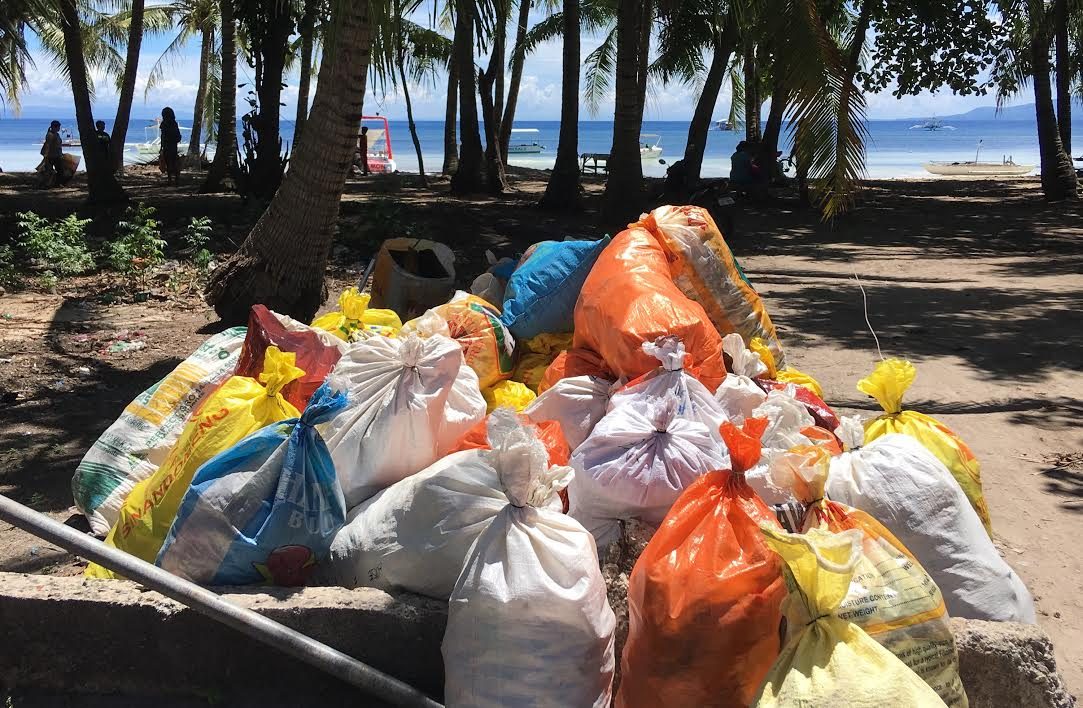SUMMARY
This is AI generated summarization, which may have errors. For context, always refer to the full article.

Part 3 of a series
Part 1: Panglao: Riding the tourism cash cow
Part 2: Garbage in paradise: The price of Panglao’s rise as tourist destination
PANGLAO, Bohol – With the tourism boom around the bend, the municipality of Panglao is banking on its 3-year-old system to solve the tourism-waste nexus.
Celerina Mijos, a regular employee hired by the municipality, is a waste segregator, a key job in Panglao’s waste management system.
Stationed at the Lourdes Ecological Facility, the central Mineral Recovery Facility (MRF) of Panglao, she clusters garbage collected by the barangay MRFs and prepares the trash for two destinations: the piles of recyclables are sold to a private recycling plant in Cebu while the heaps of residuals are sent twice a week to the landfill.
“We were hired because we are familiar with this job. We’ve been garbage segregators for 5 years now,” she said. “The heaviest bag that we carry is 10 kilos… around 5 to 10 kilos. It’s heavy but we endure.”
Panglao’s solid waste management system follows the provisions of Republic Act 9003 or the Ecological Waste Management Act, which identified the minimum requirement: the construction of one MRF per barangay.
All of Panglao’s 10 barangays have MRFs that are directly under the supervision of the barangay captains.
Starting 2015, the local government implemented the system in its 10-year solid waste management plan. It did so through the following:
- Financed the building of mineral recovery facilities (MRF) in each barangay in Panglao
- Provided each barangay with a mini-truck for collecting household and non-household waste
- Implemented a strict “no segregation-no collection” policy
- Began to close the Lourdes open dumpsite and transformed it into the central MRF
- Used a portion of the income earned from the environment user’s fees for solid waste management at the barangay level
- Established the “eco-warriors”, employed individuals who check on establishments’ garbage disposal system
- Provided penalties for establishments and individuals who fail to follow the policies
But aside from segregating the waste generated by the municipalities, Celerina and 9 other segregators are also handling the existing garbage in the facility, a feat since the unsegregated trash covers the entire 1.5 hectares.

In 3 years, Celerina and 9 other waste segregators were able to control the existing waste in the 1.5-hectare Lourdes facility. They were even able to “push back” the mountains of garbage that filled the facility when it was an open dumpsite in 2007.
A history of neglect
The half-hectare entrance to the facility has been cleared and is now a site of thriving plants and flowers, and a spacious parking lot for Panglao’s two dump trucks.
The garbage problem is not new in Panglao.
The whole province of Bohol has a history of “poor” waste collection and management. In 2003, Bohol’s garbage collection services reached only 14% of households in 48 municipalities.
With only one dump truck in 2003, Panglao’s waste collection could accommodate 15 households only, leaving 4,320 households to their own practices of disposing their trash: dumping in land or water, burying, or composting.
The Executive Legislative Agenda (ELA) for 2011-2013 acknowledges the “laxity on the strict imposition of existing regulations regarding solid waste management and non-compliance of the zoning ordinance” that is prevalent among all local units in Bohol.
“There was a waste management system before…but there were many problems when I assumed office,” Manuel Fudolin of the municipal solid waste management office recalled. “There are many gaps, many lacking resources. There’s really no focus on solid waste management.”
It was only when Fudolin was appointed officer of the solid waste management office that a firmer system was put in place.
But when the construction of the airport materialized, working groups were created to solve the garbage problem. Now Panglao has a 46% collection rate among households and non-households. This is how it managed its soid waste.

Overwhelmed by tourism
But having a system is not enough. Panglao’s house cleaning is overwhelmed by the volume of trash from tourism establishments that are brought on a daily basis to the MRFs.
“In barangays with a lot of tourism establishments, we assist the barangays in collecting garbage with the dump truck,” Fudolin said. “But one trip is not enough – they have to go back to collect the segregated waste.”
This was especially the case in Barangay Tawala, the center of tourism in Panglao.
“The MRF in Tawala is a mess because of the volume of recyclables and residuals the barangay collects every day. Tawala is a big problem because segregators cannot finish the collected garbage in one day.”
The poor waste collection practice of days past also had repercussions as locals developed bad waste management habits.

Because of the strict implementation of the “No Segregation at Source, No Collection” policy and the collection only of residuals and recyclables, establishments have resorted to disposing their trash by the roadside, on beaches, and vacant lots when nobody is looking.
“If you go around Panglao, you’ll notice that trash is everywhere,” he said. “And the trash doesn’t come from households. It comes from establishments that don’t assign segregators. If there’s no segregator, we don’t collect the garbage so these establishments throw their trash everywhere,” Fudolin added.
He also admitted that the municipality is overwhelmed by the rise in tourism visits and activities, especially after the temporary closure of Boracay. The opening of the new Panglao International Airport is expected to exacerbate the garbage problem and it is feared that the municipality will not have enough resources and capability to address it.
“Right now we are still solving the garbage problem at the Lourdes dump site while managing the daily waste outputs of existing businesses,” Fudolin said. “Once the airport opens… garbage will be a much bigger problem,” he lamented. – Rappler.com
To be continued: Part 4 | In Panglao: Tourism funds waste management and conservation
This story is part of a series on tourism and waste management in the Philippines, and was supported by the Internews’ Earth Journalism Network (EJN).
Add a comment
How does this make you feel?
There are no comments yet. Add your comment to start the conversation.